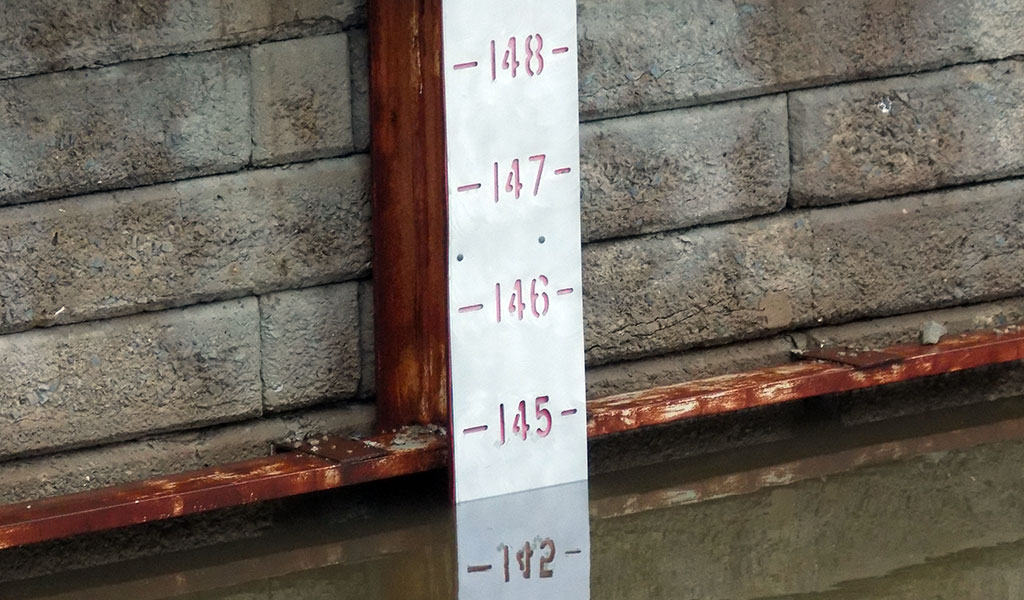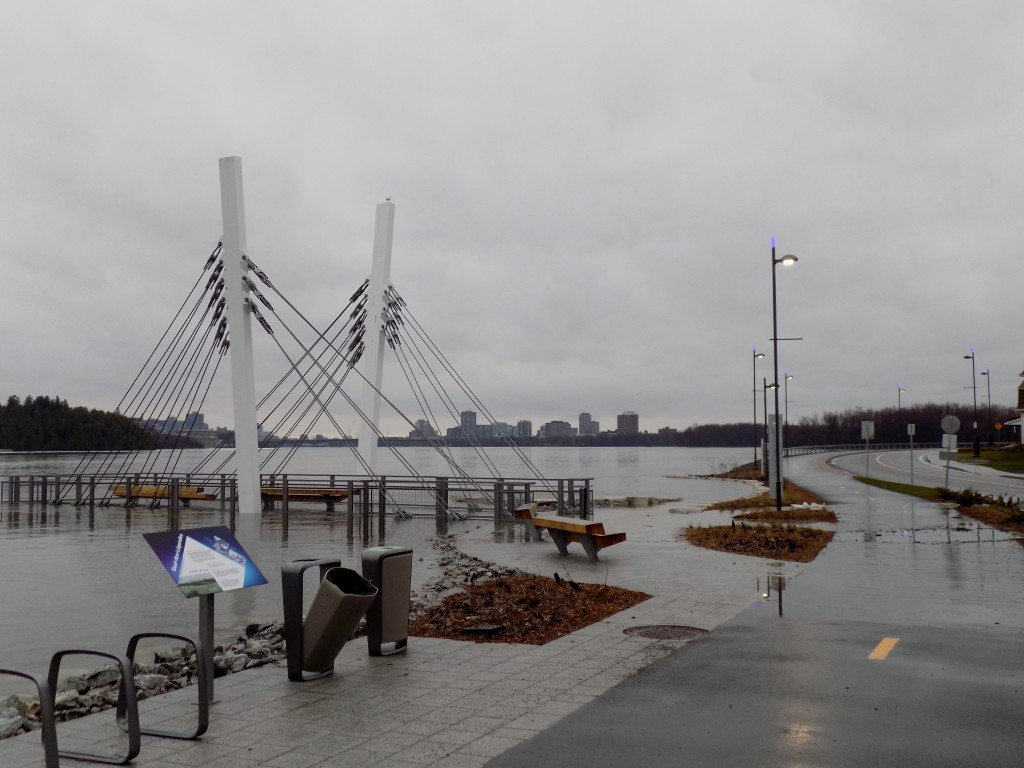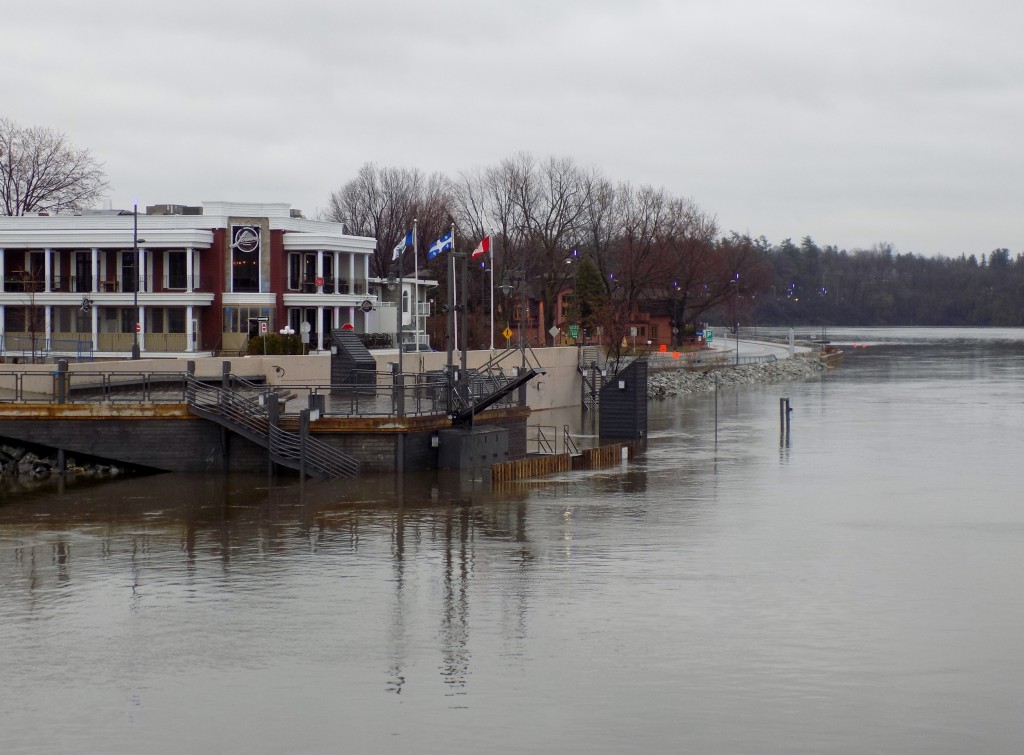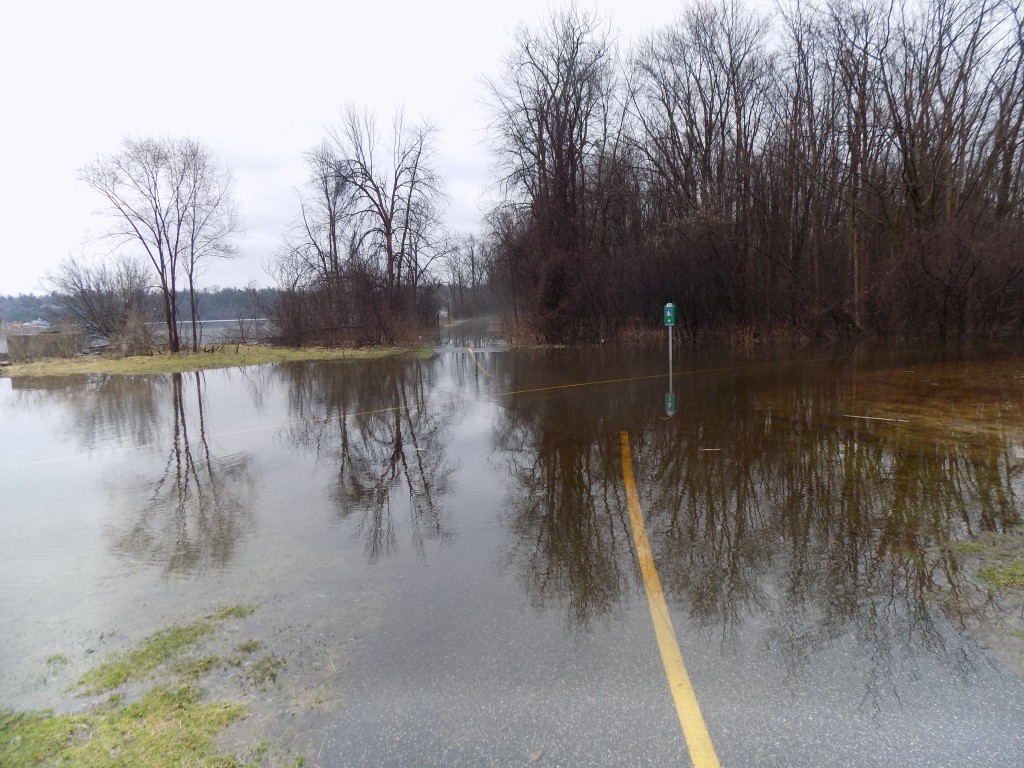Freshets and flooding on the Ottawa River

On Wednesday, the water was 144 feet deep where the Gatineau River flows into the Ottawa River at Pointe-Gatineau. Photo: James Morgan
“How high’s the water?” asked Johnny Cash in the old song. The short answer in Ottawa and Gatineau is pretty high during the current spring freshet or runoff. Above average precipitation and melting snow and ice has led to flooding along the Ottawa River.
Most of the Ottawa River forms the boundary between Ontario and Quebec, and there are several hydroelectric dams located along it, so flood monitoring and water flow coordination is coordinated by a federal-provincial agency called the Ottawa River Regulation Planning Board. The board says that by mid-April, the area received the same amount of precipitation in normally gets in an entire month. Flooding is expected to be the worst along the main section of the river between Pembroke and Hawkesbury, Ontario.
The last record spring freshet along the Ottawa River was in 1998. The depth reached 144 feet at Pointe-Gatineau where the Gatineau River flows into the Ottawa. On Wednesday, the depth marker there was at the same level. The Planning Board is anticipating more flooding and says its severity will depend on how much precipitation is received in the next few days.

The Ottawa River has spilled over this pier and onto Jacques Cartier Street in Gatineau. Photo: James Morgan
The watershed of the Ottawa River is huge at 56,000 square miles. It begins near Temiscaming in northwestern Quebec and takes in tributaries all the way down to Lake of Two Mountains near Montreal, where it enters the St. Lawrence. On Wednesday, the amount of water flowing out of the Ottawa River at Carillon, Quebec, northwest of Montreal, was over 23,000 cubic feet per second.
The banks of the Ottawa River are flooded over in many places. Near the mouth of the Gatineau River in Gatineau, Jacques Cartier Street is closed because water is flowing onto the road in the area. Homes and businesses along the riverfront appear to be safe for now, but city authorities are preparing to start filling sandbags if necessary. Piers and sections of a new walkway long the waterfront that just opened last year are submerged, and the tour boat dock looks better suited for submarines. Across the Lady Aberdeen Bridge, the recreational paths in Leamy Lake Park look like they would be better for canoes than bicycles.
The Quebec Department of Public Security, which looks after natural disasters, is offering funding to Gatineau and nine other area towns to cover flood damage to public facilities or to private property not covered by insurance.
The Rideau Valley Conservation Authority reports that water levels along the Rideau River and its tributaries are receding, but a flood watch remains in effect. Further to the east, the South Nation Conservation Authority is predicting localized flooding in the town of Alfred and Plantagenet along the northern reaches of the South Nation River near where it flows into the Ottawa River.
Water levels are extremely high on the upper reaches of the Ottawa and Gatineau Rivers, and that means it will still be a few days before the waters crest downstream. With rain still in the forecast until Saturday, the threat of flooding is not going away.










The most important thing about “Climate Change”, is that it doesn’t say anything about which way, how, or where…NOW is implied. We will experience climatic and weather events that have no precedent, and will have to find ways of dealing…or rolling with the punches. Those whose lives and incomes are tightly hitched to the weather (like farmers) will be hard pressed to do their jobs efficiently and effectively, and the rest of us may end up hungry.
We’ve heard about the threat of “Global Warming” and “Climate Change” for forty or fifty years, and failed to act upon that warning… now it’s time to pay the piper.